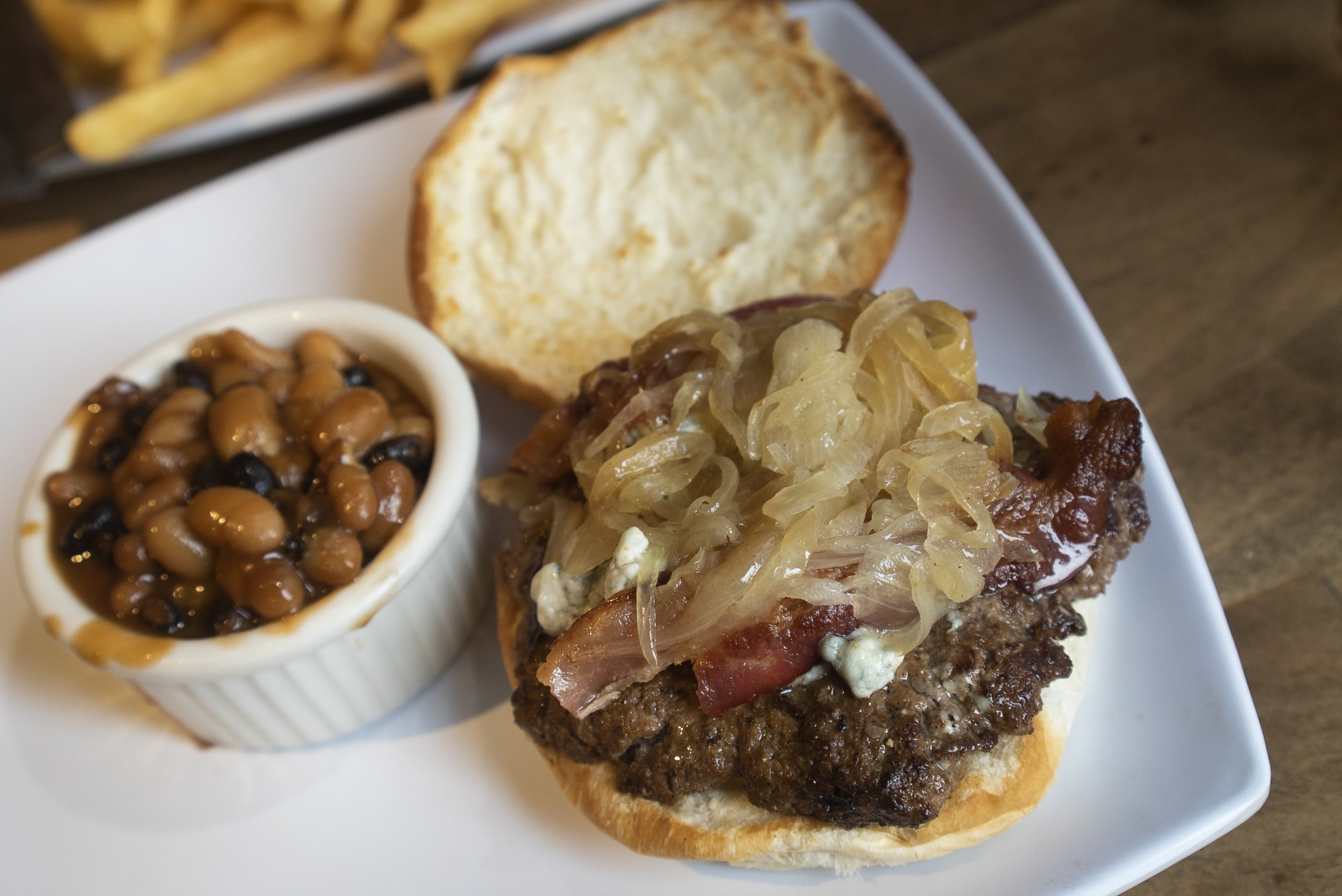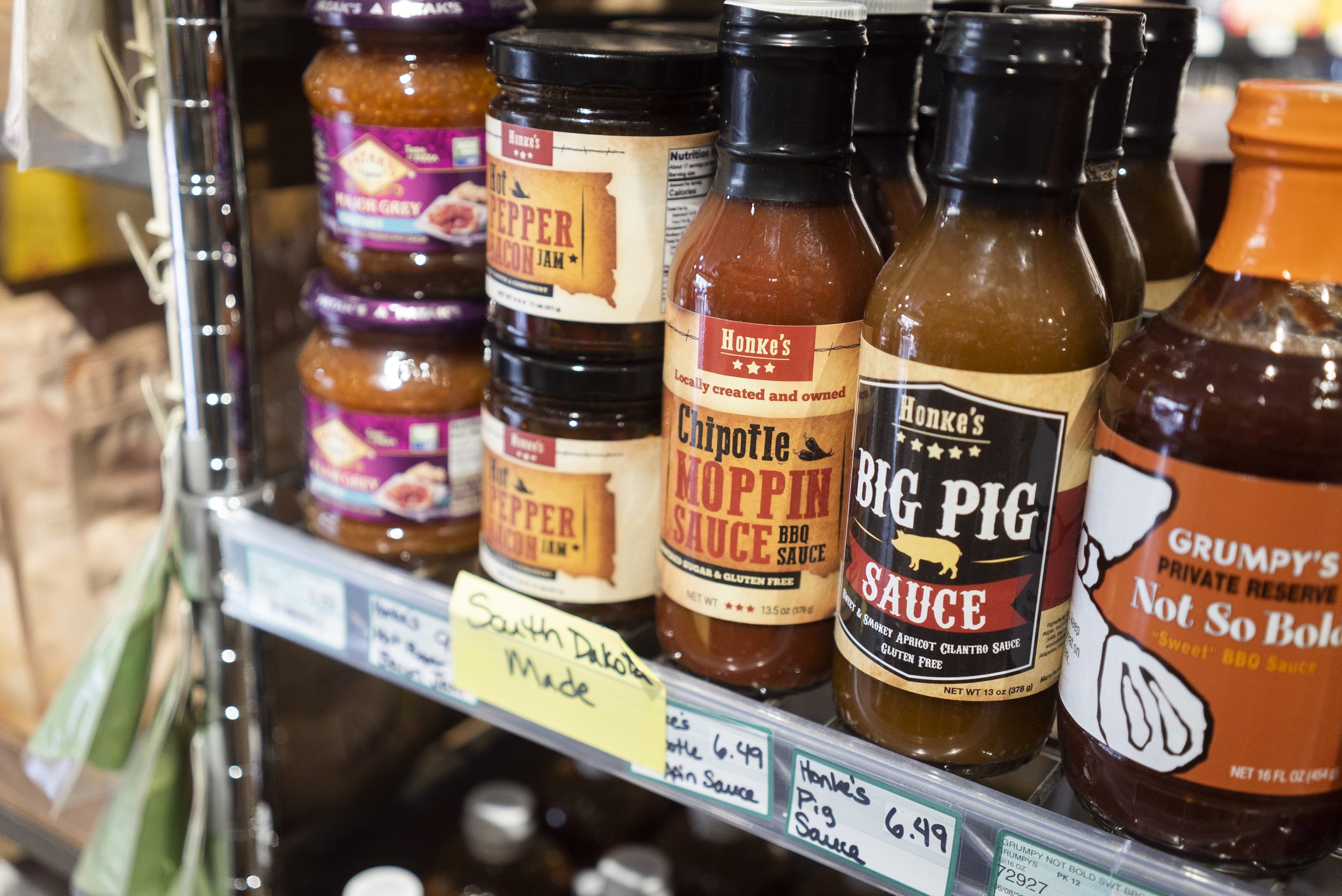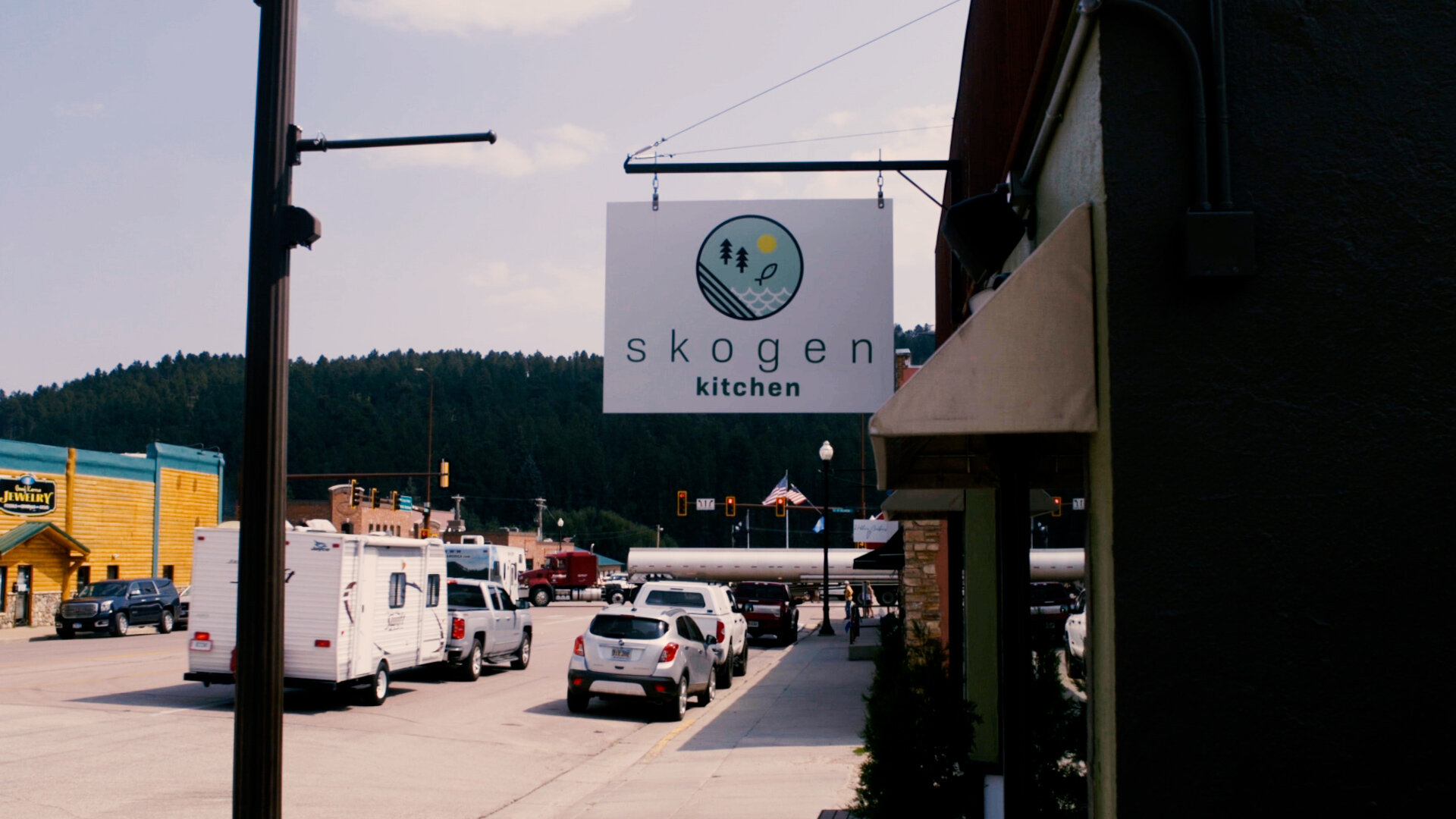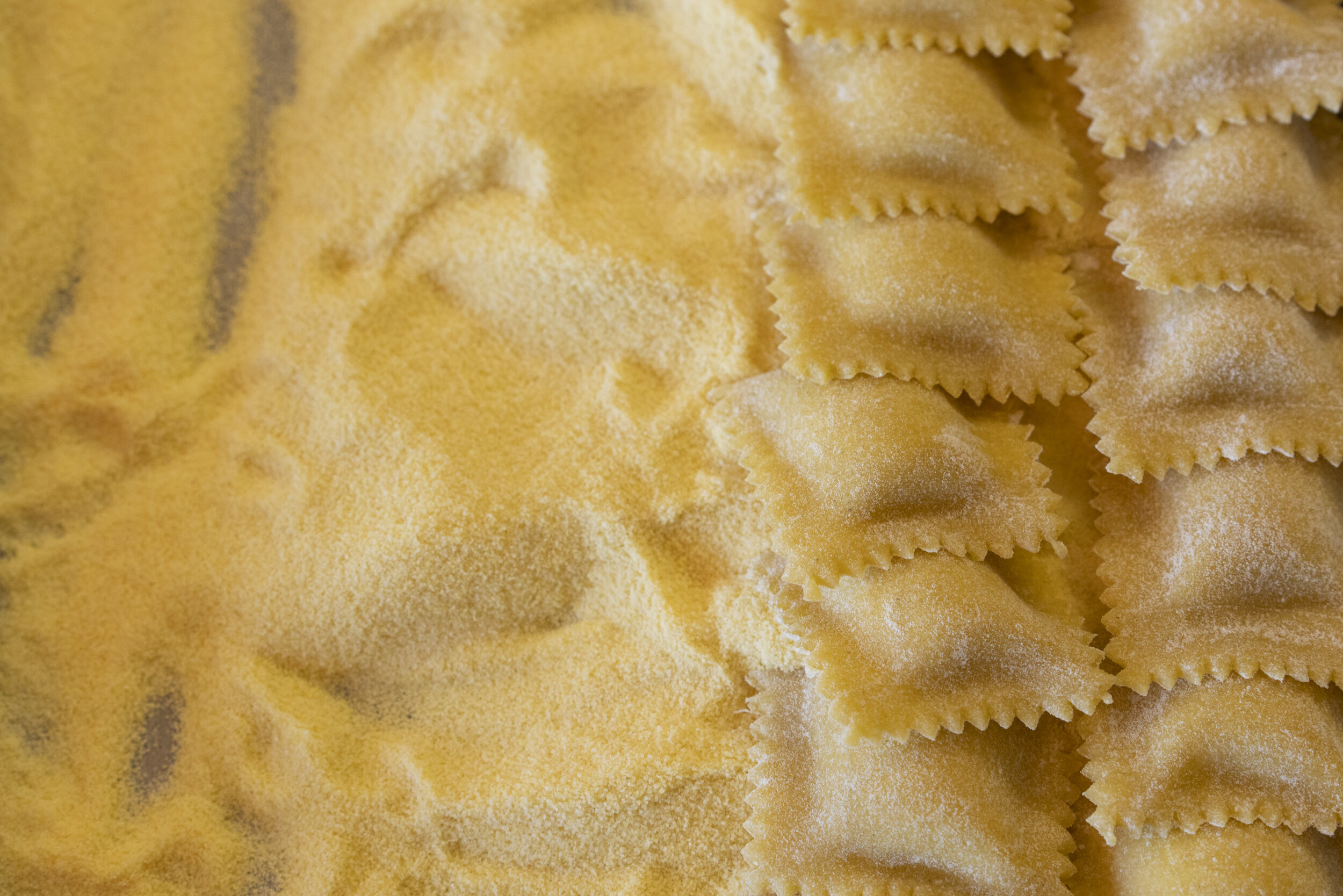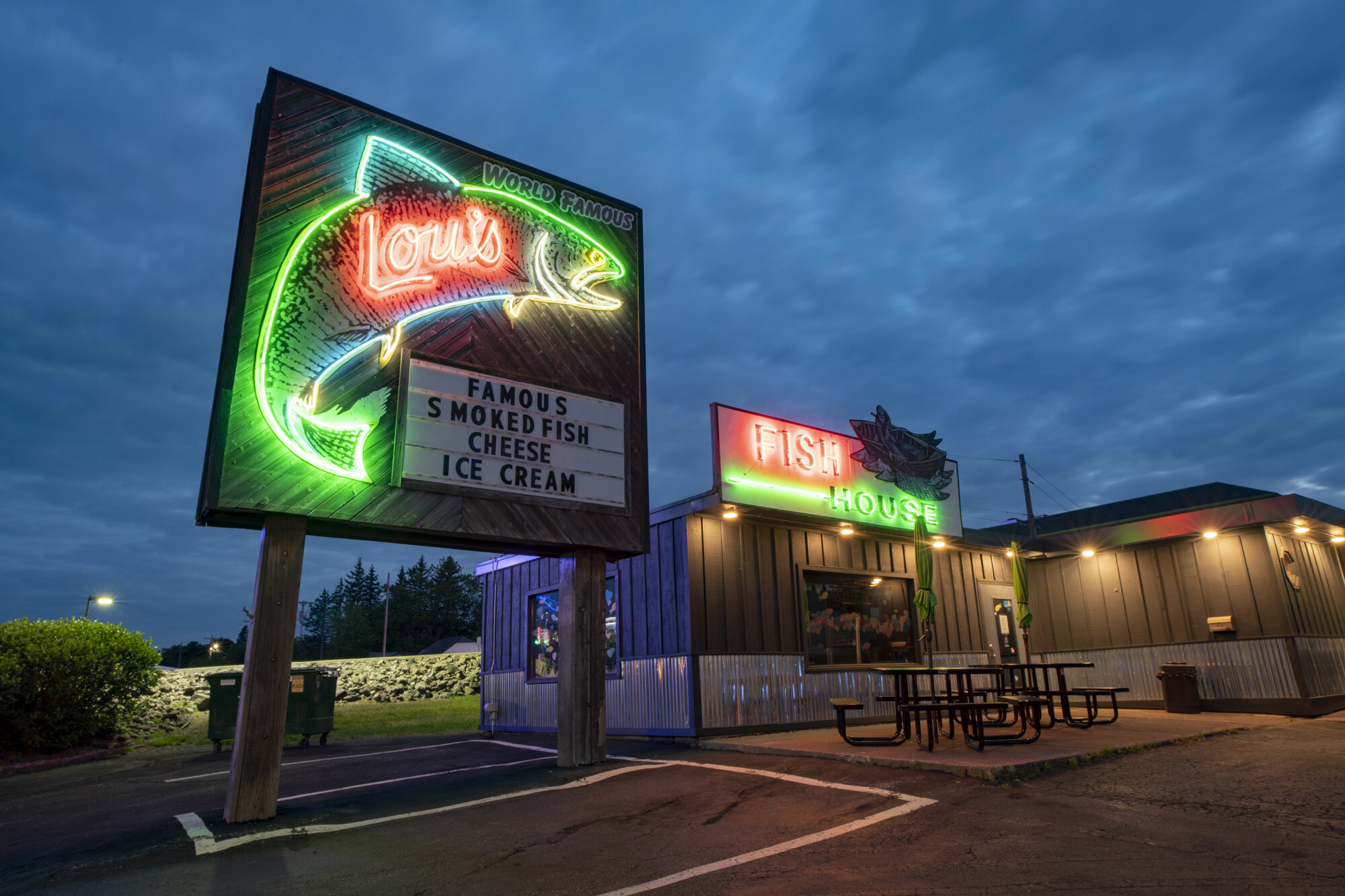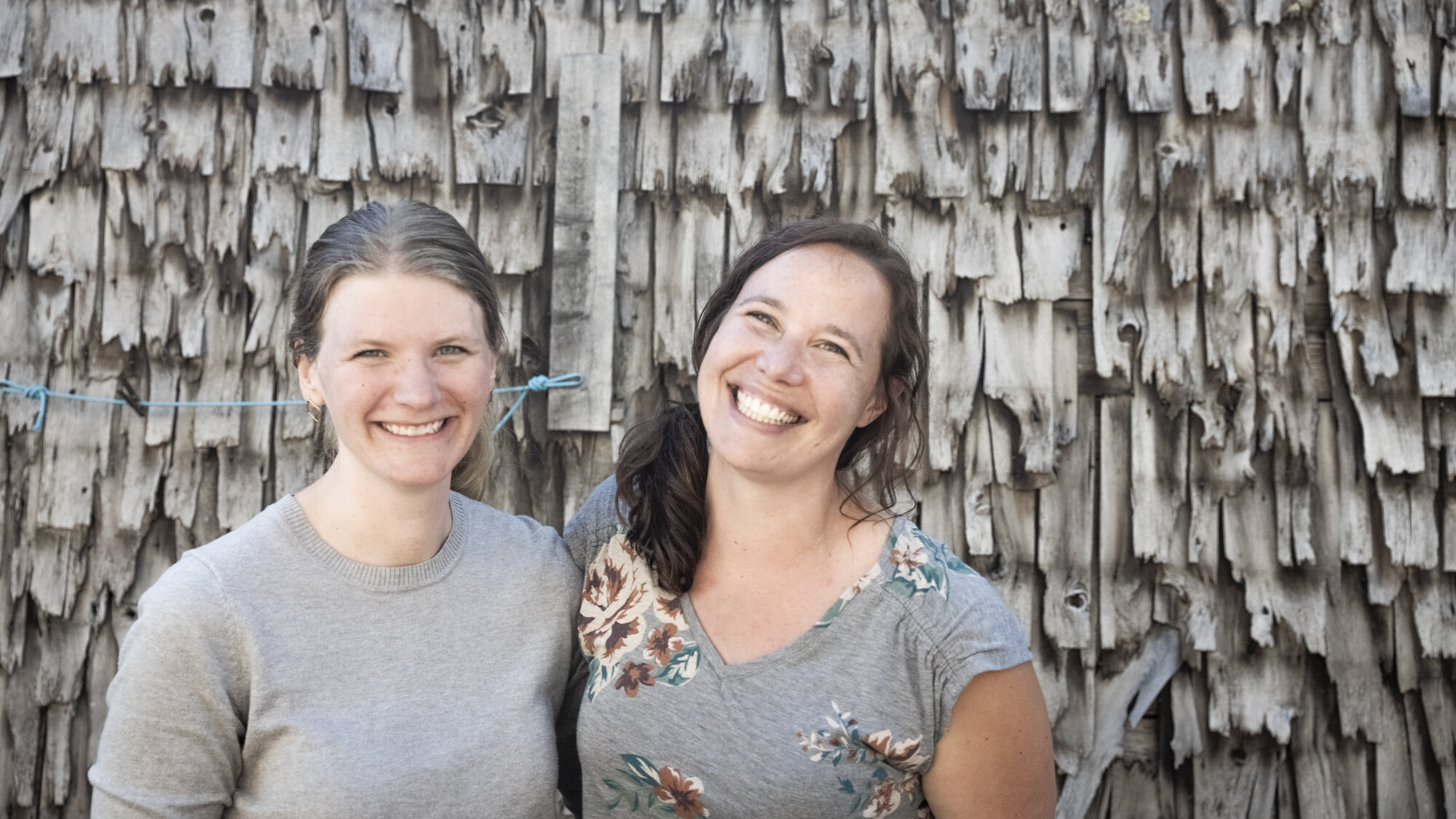My family and I have loved adventuring in the Black Hills for quite a few years now. Custer has always been a favorite due to the surrounding scenery, access to fun, and the proximity to Custer State Park, which, in my opinion, is a world class destination. I spent my formative years living in Colorado and Montana mountain towns and Custer definitely has a little bit of that mountain town spirit. And a great vibe. Kind of what I imagine Estes Park or Crested Butte felt like in the 1980s.
The Black Hills Blues burger and a side of Granny’s Baked Beans at Black Hills Burger & Bun Co in Custer, South Dakota.
On a trip to Custer back in 2013 or so, we discovered a tiny little restaurant called Black Hills Burger and Bun (BHBB). There was a line out the door and that usually means it’s worth waiting for. It was a tiny place- probably only 700 or 800 sq ft. I had read somewhere that the owners were from Iowa and had visited Custer on vacation and never wanted to leave. Being from Nebraska with a lot of familial roots in Iowa, that intrigued me. More on that later. Yes, the wait was well worth it as the burgers were next level. And the sides were on point too. I think we ate there three times that week. Still some of the best fried cheese curds I’ve ever had.
They’ve since upgraded to a way bigger space- and their old space is being put to very good use by Skogen Kitchen. We did a lot of traveling for Midwest Food Stories productions this summer and hitting Custer was a must because I’ve had BHBB on my list for a long time now and it’s one of my favorite towns. It has always felt way more laid back and more authentic than the other Black Hills towns and this trip definitely confirmed that as we got to meet and hang out with a handful of locals that were all super cool and very passionate about living in the hills- and specifically Custer.
Claude and Christie Smith, owners of Black Hills Burger & Bun in Custer, South Dakota.
The owners of BHBB, Claude and Christie Smith, were both from small towns in Iowa and had often vacationed in the Black Hills. Claude’s father was a grocer, so Claude followed in his father’s footsteps and started working in the family grocery store at a young age. He reminisced about pulling an old grill up to the store on weekends and knocking out dollar cheeseburgers to a long line of hungry locals. Claude had always told Christie that they would live in the Black Hills one day, but she just always assumed that was just wishful thinking. She said that their Iowas roots ran deep. But then Claude saw that a small grocery store had hit the market in Custer. That was that, they uprooted and migrated to Custer to continue on the grocery business in a new town. After a couple of years in business, they were approached by a man that wanted to buy their store. They politely turned down his offer, but he persisted. After about the third time, they looked hard at the offer and decided it was too good to pass up. They sold the store and moved back to Iowa. But it took a move away from the area to realize that Custer and the Black Hills were now home, so after a year back in Iowa they decided to move back to Custer and found a small restaurant for sale. Christie wanted to do Mexican, but Claude couldn’t wrap his head around that and felt that they would be more successful elevating the burger game. And that’s how it began.
The grocery store that Claude’s father owned in Iowa.
I was curious about the emphasis in the name on the burgers AND the bun. You don’t see that everyday. Usually the bun is a side note, but not here. When you think about it, the bun is a super critical component to the overall burger experience. If the bun is bad, it doesn’t really matter how good the beef is. And vice versa. But if they are both exceptionally good, then you are getting to BHBB territory. Claude and Christie working together is what makes this operation sing. Back in the grocery days, they always baked bread and ground their own meat, so this restaurant is simply an evolution of that. The beef patties are a perfect combination of top round and brisket, and Claude carefully determines the ratio every single morning as he custom blends to ensure the perfect fat ratio. They aren’t massive 1/2 pounders, but they aren’t smashed either. Claude has used the same $2 plate since 2012 to kind of press the patties, without smashing all of the love out of them. The same plate! He estimates that he has formed close to a million patties with that plate. He considers it the most valuable piece of equipment in the restaurant. They also have a bison option, which is incredible too, and he said that that product has greatly increased in popularity over the last few years. All of his bison product comes from South Dakota. The buns? Perfectly soft, but not overwhelming. I felt that the ratio between bun and burger was just perfect.
I’m pretty positive that you can’t go wrong with anything on the menu, but you know when you find something you love and it’s just so hard to order anything else? That’s how it is with BHBB for me. I always get the The Fat Smitty, which is a pretty classic combination of cheddar, bacon, lettuce, tomato, fried egg, and a house-made garlic aioli. All of their house-made sauces are delicious. My wife’s favorite has always been the Hot Granny, which is named after Claude’s mother. This one combines bacon, cream cheese, fresh jalapeños, and a house-made sweet and spicy sauce that is more like a really thin jelly. You can take some of that home with you and I highly recommend you do. A lot of the menu items are inspired by family members or childhood memories, like the State Fair Fritter that was always their son’s favorite. I’m a huge fan of pork tenderloin sandwiches and this one is definitely one of the best I’ve ever had. The breading is so perfectly light and doesn’t overwhelm the flavor of the pork. And then there’s the bun. The Fried Green Tomatoes, Fried Pickles, and Cheese Curds all have a very similar breading as the pork fritter and all deserve your attention.
Located right next door to the restaurant is the Wild Spruce Market, which is a specialty foods market that the family opened in 2020. Claude and Christie’s daughter, Jessica Hartman, runs that business. I was instantly attracted to the vibe of this place and the eclectic selection they offered, so I had already lined up a shoot there before I even realized that it had the same owners as BHBB. They have a great selection of local, regional, national, and international goods. I was super impressed with their beer and wine selection and we ran into a local that schooled us on South Dakota beer and seltzers. They have a bar with local beers on tap and a daily kombucha special. On nice days the garage door is up to offer a great place to have a couple of drinks and enjoy some great people watching. We grabbed some local beverages and nice assortment of picnic goods and headed to a nearby lake in Custer State Park.
The Wild Spruce Market in Custer, South Dakota has an amazing selection of picnic items, local goods, foods from all over the world, and a great selection of tasty beverages.

